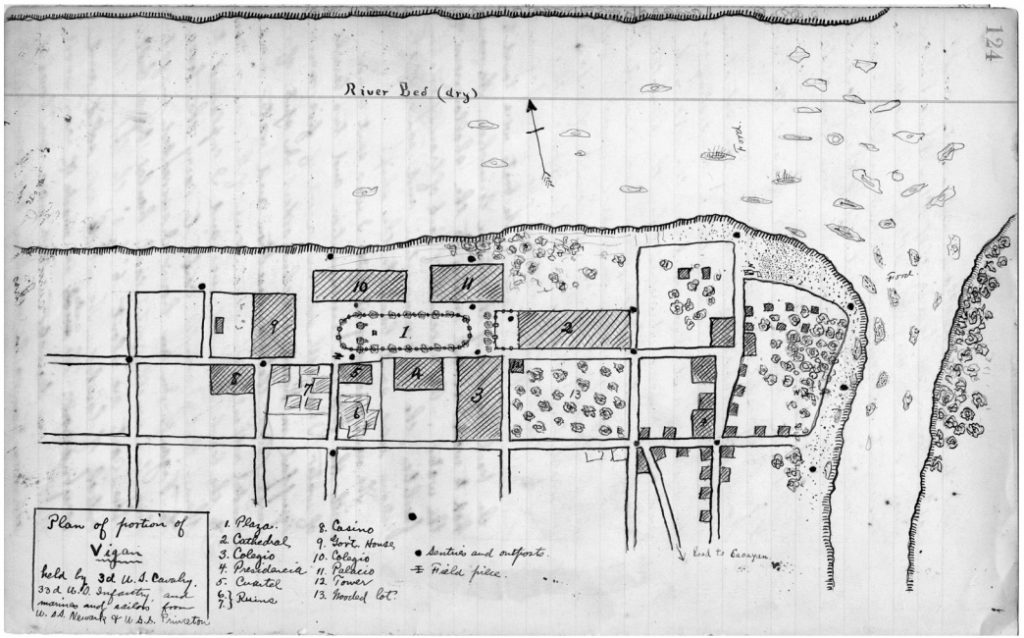The next morning at 6:30 I was sent ashore with the field piece ammunition and two barrels of water. I had with me an escort of five men equipped in heavy marching order. In spite of a small surf the ammunition and water was landed without difficulty. Some of the natives came to the beach to meet us and I explained to them that I wanted carts to carry the boxes to Vigan. In an hour I succeeded in getting two small carts, each hauled by a bull. These carts are about 6′ by 3′, the body is built entirely of bamboo. The wheels are solid and very narrow. The axles are made of iron wood about 6″ in diameter. There were six boxes of ammunition, each weighing 315 pounds. I placed these boxes in each cart, but the wheels sank so deep in the sand the bulls could not move them. So I motioned the Filipinos who were standing around to catch hold and shove, which they did with a will. However, we made slow progress, and I was on the point of taking one box out of each cart and coming back
for them when we reached the hard road (about 200 yards away), when a third cart came along. We placed two boxes in it and soon with the aid of about twenty Filipinos succeeded in reaching the good road. I was unable to take the water with me on account of lack of transportation facilities.
The road to Vigan is good. It is crossed by two streams over which are foot bridges built entirely of bamboo. The carts were hauled across through the water. Passing through a cut between the hills, I noticed trenches on one of them. They were unoccupied there being no insurgents between the coast and Vigan. We arrived at Vigan without any noteworthy incidents.
As in other Spanish Colonial cities the principal buildings in Vigan are built around a plaza. This plaza was originally fenced off but only the large stone posts are now standing. In it are two band stands and a monument. The Cathedral is built of stone, the rest of the important buildings are built of brick covered with adobe. The cathedral and building marked P. was occupied by the Princeton’s men. The Newark’s men occupied the Colegio (3), the cuartel, and camps marked N. The Army occupied buildings 10 and 11, and No. 9 was used as a hospital. Outposts were placed as shown.
The river bed has very little water in it and is easily fordable at the north east corner of the city. There are a number of sand dunes covered with long grass in this part of the river that could afford excellent protection for an attacking army. In fact the insurgents tried to enter the city that way as is shown by the fact that several dead ones were found behind the dunes.

of Vigan”
